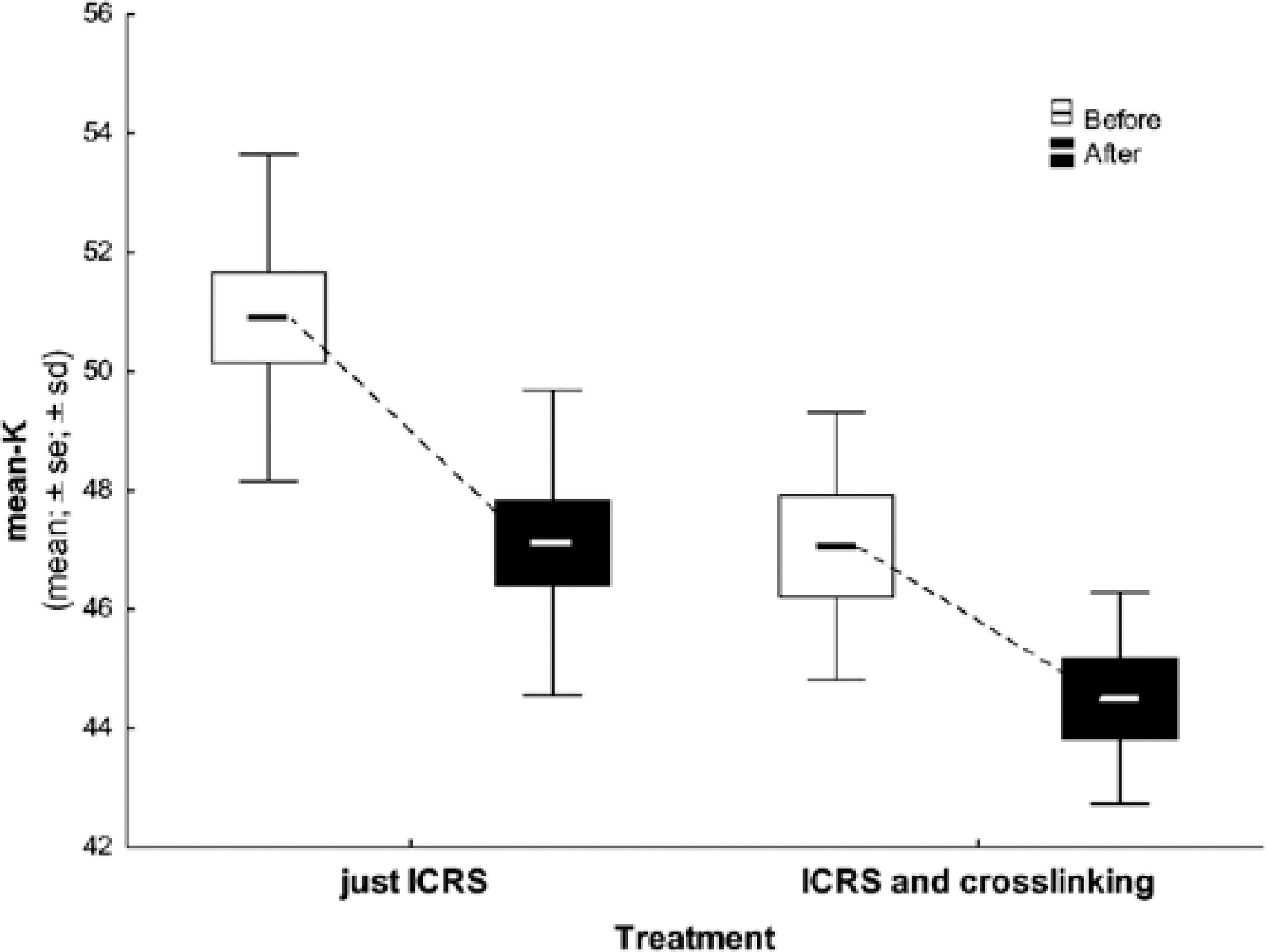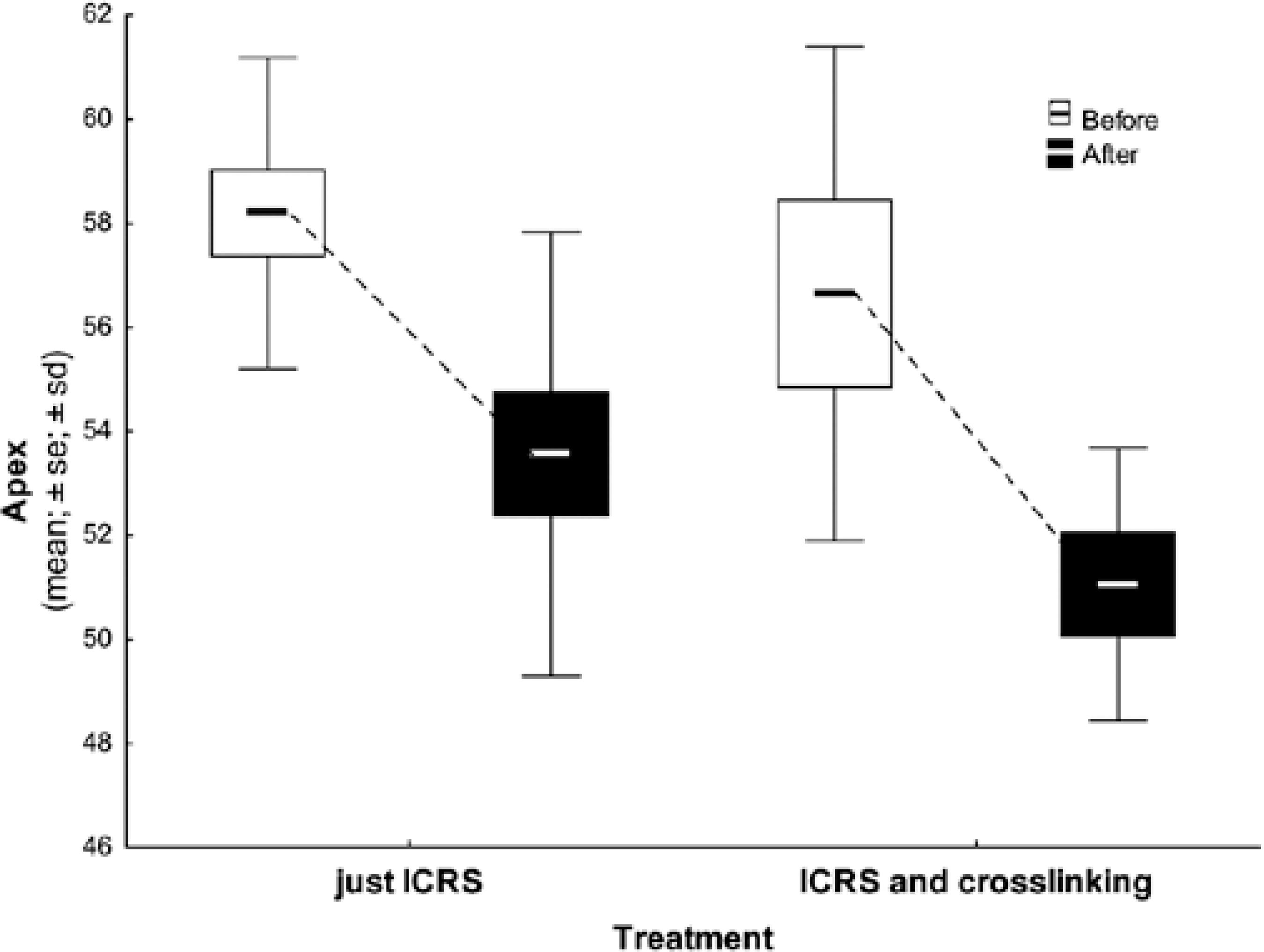Purpose:
To compare visual outcomes, corneal astigmatism, and keratometric readings in patients with keratoconus who underwent intrastromal corneal ring implantation (ICRSI) alone with those who underwent ICRSI combined with ultraviolet A riboflavin-mediated corneal collagen crosslinking (CXL).
Methods:
Pre- and post-operative best-corrected distance visual acuity (BCDVA), spherical error, cylindrical error, and mean keratometry were retrospectively compared over a period of 2 years in patients with keratoconus who underwent only ICRSI (group 1) versus those in patients who underwent combined ICRSI-CXL (group 2).
Results:
Thirty-two eyes of 31 patients were evaluated. CXL was performed in 10 cases (31%), and there were no complications or need for ring repositioning. BCDVA improved from 0.54 to 0.18 in the group 1 and from 0.56 to 0.17 in the group 2. Spherical and cylindrical errors and mean keratometry values significantly decreased in both groups. No patient postoperatively had visual acuity (VA) of less than 20/60 on refraction, and 78% exhibited VA better than or equal to 20/40 with spectacles (72% of group 1 and 90% of group 2). Improvement in the spherical equivalent (SE) value was observed in the group 1 (from -5.89 ± 3.37 preoperatively to -2.65 ± 2.65 postoperatively; p<0.05) and group 2 (from -6.91 ± 1.93 preoperatively to -2.11 ± 3.01 postoperatively; p<0.05).
Conclusion:
Both techniques can be considered safe and effective in improving VA and refractive SE values, in decreasing the curvature of the cone apex in the topographical analysis, and in decreasing corrected diopters postoperatively in patients with keratoconus.
Cornea; Corneal stroma; Keratoconus; Prosthesis implantation; rosslinking reagents; Riboflavin/therapeutic use; Ultraviolet rays; Visual acuity



